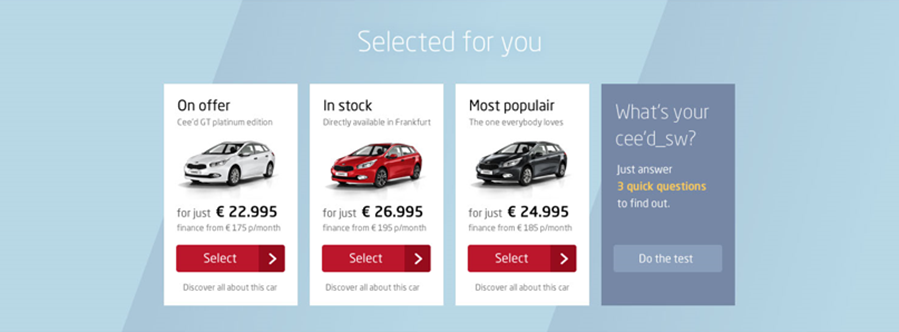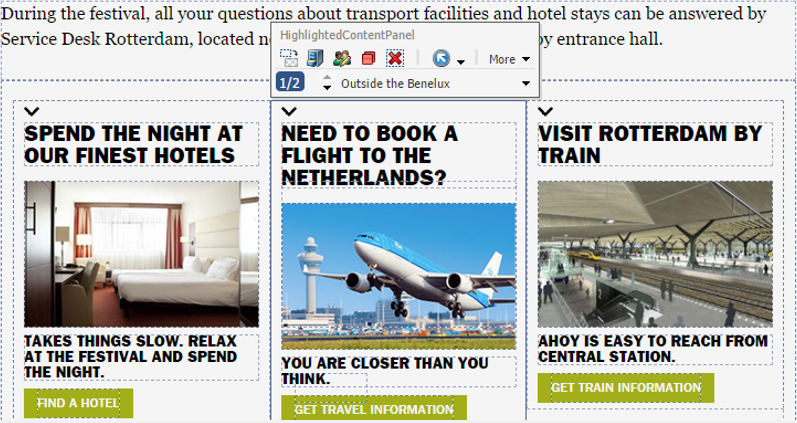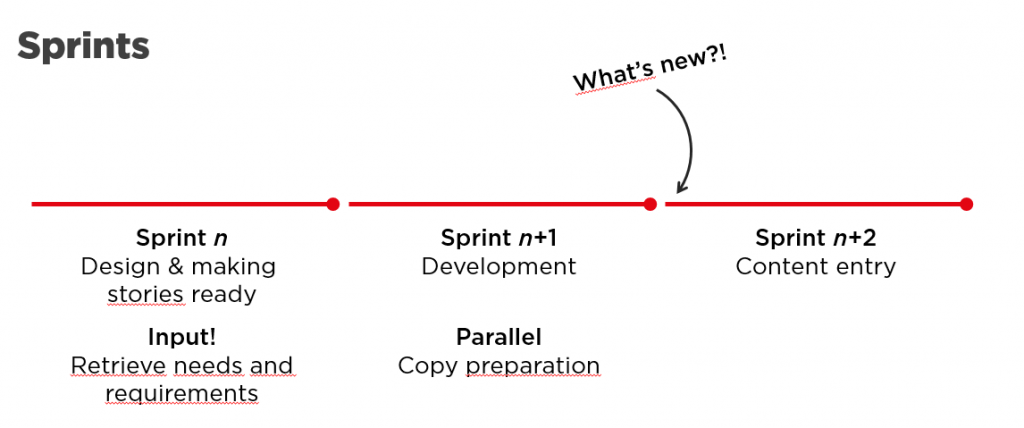‘Bridging the gap’ is a saying that really applies in utilizing Sitecore DMS: companies and brands with the bigger budgets are really getting into applying DMS and you as a hard working marketer with limited resources are still like, how am I going to do that. Fact is that budget is not the prerequisite of applying DMS, except for owning the license keys. Apart from that you have to be clever in order to get to that low hanging fruit as soon as possible. Let me explain to you where you start and what you can do sooner than you can spell DMS.
First of, why should I start using DMS quickly?
You could write a book about what you could do with DMS. No really, check out ‘Connect: How to Use Data and Experience Marketing to Create Lifetime Customers’. But to keep it simple, with DMS you have different modules directly at disposal that allows you to evaluate what a user’s engagement value is for your brand, create profiles of cette user and improve and personalize your content based on that information, even automated if desired. It will really give you a big edge on your default content that you will send to the masses.
Petro Salama once stated in a keynote that us online lot should not create fully completed software packages, but create tools that will enable us to get further in our goals and opportunities. For me, DMS is such a tool, which enables me to give a much better user experience to my client’s customers. This is not only achieved through personalizing content, but already starts at the foundation of the site. My experience is that if you work closely together with UX’ers and concepters, preferably agile, you will gain much much more than through content alone. And this is why you should start quickly. Some examples:
When you want to buy a car:
- When you click on an cool hatchback, in blue, with a certain business package, why is the family upgrade that I clicked suddenly red with lame rims and without that very nice panorama roof which I deliberatly clicked on?
- When you want to configure your ideal car, car manufacturers will often offer a online car configurator: a stand-alone application. Why not starting on a homepage where you click on a model (profile spec 1!), you pick a certain colour (2!) on the model homepage, you continue selecting the business trim (3!) with a particular rim (4!) etc.
- When you select the colour Inferno Red, you are explicitly selecting the particular Inferno Red, but also Red in general. Both values can be valuable for usage later.
- Car manufacturers often have large lots full of stock cars that they want to sell first, possibly with discount. If you’d know that a customer would live close to certain lot, why not offer him/her such stock car with discount and the promiss that they could have the car waiting by tomorrow?
When you want to go to a music festival:
- When you are living in a different country, or even a different continent, would you rather have information about plane tickets, airport transfer services and hotel offers, or see how you can reach the venue by car?
- Particularly with festivals, visitors of festival have a changing need for information based on the date of today compared to the starting date of the festival. Long before they are consider joining the crowd they are scanning the musicians; shortly before the event they want to create their personal festival calendar; check their calendars and see festival notifications during the event and check out all the beautiful photos of the event afterwards. Based on the date, the festival website has four different purposes!
These are merely suggestions that may apply when utilizing personalization. You should start with this right at the beginning of your new platform. Or, improving your current platform, you should take this into account and not develop without the proper prerequisites.
Sure, we will do DMS! In phase two.
Many agencies find DMS complicated. And, to be fair, it is. Although the suite is comprehensive and will go all the way down the rabbit hole, it is the theory what makes it difficult. Agencies directly think they have to build Starship Enterprise for twice the yearly net income of a Saoudi sheikh, managers of content management department forsee its capacity to explode and Sitecore setting your company on the maturity level graph is not really helping either. I am telling you: start small.
Don’t postpone, but one step at a time. A couple of pointers:
Preferably work agile, and have the content editor and/or marketer join the force.
Classically, many projects are well documented beforehand, are created by your development agency and then finally delivered to you at the end. Thus, the moment the content editor will start thinking and working with the solution is after delivery. I have great experiences the last major projects we did where in the first sprint (n) UX and content managers give their input and describe their ideal world through requirements. That world is created in the second sprint (n+1), during which the content is written, both default as personalized. After the second sprint is demonstrated to all stakeholders, the content would be entered in the third sprint (n+2) after a brief training of ‘what’s new’. This process would repeat itself over and over, whereas personalization (but also settings up goals, applying multivariate testing, etc.) is being integrated continuously.
Note: this would imply that content managers and marketers are up to speed with the ins and outs of Sitecore. That is true, they need to be trained before being able to describe what they want and how to they want to achieve that. Your agency should be able to perform that training, or otherwise Sitecore offers so-called SBOS (Sitecore Business Optimization Services) workshops and trainings what could help you. You could also contact me ![]()
Make sure that UX is capable of embracing the possibilities of Sitecore
Having a platform like Sitecore’s as your backbone isn’t a luxury, it is the foundation of your project. Not only for content, but also for your page grids and being flexible as such. That can make you rethink your whole approach on how to design a website.A major theme park I am working on has a very clear view of their visitors, about their needs, their park and what they can offer. The unknown factor of the visitor is who are joining them during their visit and what their state of mind is on the spot. Thus, instead of creating the next of many website that give a simple drilldown of all the attractions there are in the park, they segmentize their offer into three different groups. Based on what the visitors clicks on, they will see more of that segment with always the possibility to take a step back and discover the other segments. From a page grid point of view, UX’ers would create one-pagers with changing content sooner, than create many many pages for the masses. In this scenario, content marketers would have to write content for every park attraction and present them based on personalization rules in Sitecore. This is all out of the box!
Set power to ON.
One of the downsides of starting with DMS during ‘phase two’ – whenever that is – is that Sitecore will remain without analytics up to the point of enabling it. If you run DMS, without configuring any engagement values, any goals or profiles, you will still have the visits. The system will harvest data. It will be running, which is one task less later on in the project. Plus, as a marketer you would have the freedom to add those values, goals or profiles and start measuring on any blue monday that suits you. Not having to wait for hosting parties or developers killing your mojo is priceless.I must say, I was never able to run Sitecore with DMS on projects that were built on versions older than 7.5. Sitecore has delivered a new foundation with a new database structure that is close to brilliant. Since then we have running DMS with not much problems. Application managers and hosting departments may raise an eyebrow here and they are right. Sit down with them and have them set up a proper hosting environment with Sitecore’s recommended hardware requirements.
Start with babysteps, as I said.
Sit down together with all content- and marketing stakeholders and think of goals in the website that reflect your KPI’s. Add those goals to Sitecore and have them measured. While sitting down anyway, think about your target group(s). What makes them special? Could you come up a different cross sections (profiles) about that persona? Try to think on an emotional level (for instance: business related, enthusiastic, potential super promotor, brand ambassador, etc) and a more factual level (city commuter, family man, sports guy, single, off road fanatic). You could set up those profiles and profile keys and add them to your pages. This would already profile your visits and give them engagement value. Trigger referring website the user is coming from. Add campaign codes to your direct mail links and social media campagnes to target on that! So much low hanging fruit!
A development remains your best friend: differentiate the small things from the bigger ones!
 Many of the features are out of the box, but if you really want to go that extra mile, you would need the help of a developer. For instance, you run an online shop that sells both jet ski’s and mountain bikes. The one focussing on pleasure on the water, the other in the dirt. Two total different experiences. What would you choose as a hero image above the thank you page when your customer successfully order one of the two products? Content personalization in Sitecore works by setting rules. If rule A is true, than apply hero image 1, if rule B is true than apply hero image 2, otherwise apply a default hero image. But in this scenario the rule must validate the contents of the just ordered shopping basket. This rule is not something that comes out of the box in Sitecore, as the basket is typically a custom product or implementation. These validation rules are very very easy to create though. Slip in a small story into the next sprint and have your developers create it. Before you know it you can customize these little components that would really enhance the experience of the user.
Many of the features are out of the box, but if you really want to go that extra mile, you would need the help of a developer. For instance, you run an online shop that sells both jet ski’s and mountain bikes. The one focussing on pleasure on the water, the other in the dirt. Two total different experiences. What would you choose as a hero image above the thank you page when your customer successfully order one of the two products? Content personalization in Sitecore works by setting rules. If rule A is true, than apply hero image 1, if rule B is true than apply hero image 2, otherwise apply a default hero image. But in this scenario the rule must validate the contents of the just ordered shopping basket. This rule is not something that comes out of the box in Sitecore, as the basket is typically a custom product or implementation. These validation rules are very very easy to create though. Slip in a small story into the next sprint and have your developers create it. Before you know it you can customize these little components that would really enhance the experience of the user.
Oprah’s book club tip!
‘Connect: How to Use Data and Experience Marketing to Create Lifetime Customers’
by Lars Birkholm Petersen, Ron Person and Christopher Nash
Available on Wiley.com and Amazon.com.





Dan Berry
Nice post Andy, as you say starting small is the key and can bring momentum for stakeholders. Your point around content in sprint n+1 is good, proto-content in pre-build to get content editors in the right mindset and aid design and early development is another good way to engage I find.
Andy van de Sande
Thanks for your response Dan. Good to read that you adopt content management early on in the process as well. It does have some difficulties in an agile environment, as they have to be a flexible as possible per sprint as well. Having to copywrite content, often translate it and then having to revise everything a sprint later can be.. well, frustrating. Typically, I find that we can look ahead on the backlog enough to create feasible solutions that are here to stay, so that content management has lesser troubles. How is that in your experience?